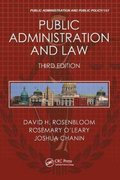Answered step by step
Verified Expert Solution
Question
1 Approved Answer
In 1994, Nobel Prize-winning economist Paul Krugman wrote an article titled, The Myth of Asia's Miracle, in which he uses insights from the Solow model
In 1994, Nobel Prize-winning economist Paul Krugman wrote an article titled, The Myth of Asia's Miracle, in which he uses insights from the Solow model to explain the economic growth that was occurring in some Asian economies at the time.
(b)On the second page, Krugman writes, "Rapid Soviet economic growth was based entirely on one attribute: the willingness to save."Brieflydiscusses this statement in the context of the article and what we know about the change in income per capita after an increase in the savings rate.

Step by Step Solution
There are 3 Steps involved in it
Step: 1

Get Instant Access to Expert-Tailored Solutions
See step-by-step solutions with expert insights and AI powered tools for academic success
Step: 2

Step: 3

Ace Your Homework with AI
Get the answers you need in no time with our AI-driven, step-by-step assistance
Get Started


